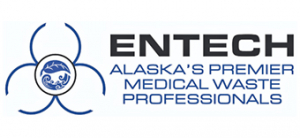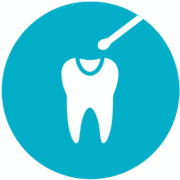In June 2017, the Environmental Protection Agency (EPA) issued a final rule under the Clean Water Act mandating specific standards to control mercury discharges into publicly owned treatment works. The EPA’s new rule requires dental practices that place or remove dental amalgam to control amalgam waste through the use of ISO 1143-certified amalgam separators. The dental amalgam wastes collected through separators require special recycling which can be accomplished through the use of return mail dental amalgam disposal systems.
While the rule requires any new dental practice to install separators meeting the EPA’s specific requirements, the compliance date for most existing dental practices already utilizing separators is 2020. Regardless, the presence of mercury in dental amalgam requires special management due to the potential impact these wastes have on the environment.
While amalgam has been utilized with dentistry for over 150 years, the management of this material helps to protect the public water sources we all rely on. The EPA estimates that more the 50% of all mercury received at public owned treatment works is generated by the dental profession. Because the mercury found in amalgam wastes is a bio-accumulative pollutant which is not easily removed, improper disposal can result in serious implications to public health.
To support the proper management of dental amalgam wastes, the American Dental Association offers the following recommendations on best practices:
Best Management Practices for Amalgam Waste
| Do | Don’t |
| Do use precapsulated alloys and stock a variety of capsule sizes | Don’t use bulk mercury |
| Do recycle used disposable amalgam capsules | Don’t put used disposable amalgam capsules in biohazard containers |
| Do salvage, store, and recycle non-contact (scrap) amalgam | Don’t put non-contact amalgam waste in biohazard containers, infectious waste containers (red bags), or regular garbage |
| Do salvage (contact) amalgam pieces from restorations after removal and recycle their contents | Don’t put contact amalgam waste in biohazard containers, infectious waste containers (red bags), or regular garbage |
| Do use chair-side traps, vacuum pump filters, and amalgam separators to retain amalgam and recycle their contents | Don’t rinse devices containing amalgam over drains or sinks |
| Do recycle teeth that contain amalgam restorations (Note: Ask your recycler whether extracted teeth with amalgam restorations require disinfection) | Don’t dispose of extracted teeth that contain amalgam restorations in biohazard containers, infectious waste containers (red bags), sharps containers, or regular garbage |
| Do manage amalgam waste through recycling as much as possible | Don’t flush amalgam waste down the drain or toilet |
| Do use line cleaners that minimize dissolution of amalgam | Don’t use bleach or chlorine-containing cleaners to flush wastewater lines |
Many other informational resources exist to support proper dental amalgam disposal at your practice. For a more comprehensive overview of the legislative changes, download this linked white paper on the new EPA standards for dental amalgam waste. Contact Entech today if we can support your efforts to safely manage this regulated waste at your practice!


